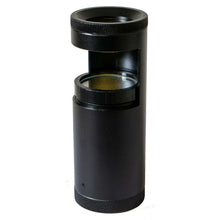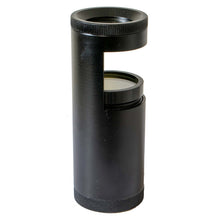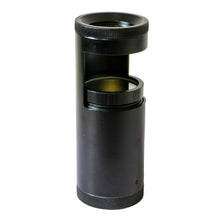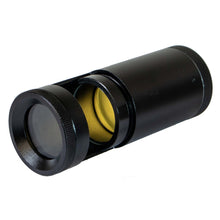Pickup available from Quicktest (WD18 8JA)
Email us
or call on 01923-220206 for appointment.
Summary
A tube 90mm tall X 35m diameter, it detects double refraction.
Area to put the stone, 12mm diameter (OK for most stones and small rings).
Built-in light.
Detail
This instrument will show you if a gemstone is singly or doubly refractive. For instance, Moissanite is strongly doubly refractive, diamond is singly refractive. This is, therefore, a very cheap (if a little fiddly) method of distinguishing diamond from Moissanite.
You cannot, however, use this instead of a diamond tester because Cubic Zirconia , glass and plastics give the same reading as diamond.
At a more advanced level: glass and plastics are singly refractive, crystalline gemstones are mostly doubly refractive, excluding the cubic system of crystals (which includes diamond and cubic zirconia). So knowing if a gemstone is singly or doubly refractive is diagnostic.
Included: soft carry-case, built in light (takes two 2032 batteries, included)
Is it easy to use?
A bit fiddly but reasonably easy. At the top and bottom of the tube are two filters (Polaroid discs), revolve the top filter until everything in the tube appears dark and place the stone on the platform in the middle. Now turn the stone so that it revolves through 360°. If it appears to turn light-and-dark it is doubly refractive, if it remains dark it is singly refractive.
Apart from the above, this item is not supplied with instructions, it is intended for gemmologists or those who are studying gemmology.
Limitations
The stone needs to be rotated on the platform. That's very easy with loose stones, but there isn't much room to fit stones mounted in jewellery, it has to fit onto the platform which is 12mm diameter.
Light must be able to pass through the stone, not a problem with transparent stones, you'll have to use a torch to shine light through semi-transparent stones, you cannot test opaque stones.
This is a standard gem tester used by gemmologists, it does not come with instructions, you are expected to know how to use it (a bit like a bicycle, it does not come with instructions telling you how to ride it).
Free gift details
If you would like one of the following free gifts with this product, select one from “Select your free gift” above.
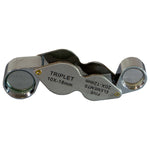
|
10X18 with 20X12 Loupe - not triplets (RRP £6.50 ) |
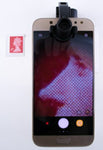
|
Phone microscope, 90X [cl] (RRP £9.50 ) |
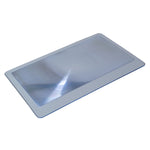
|
Credit-Card Size Fresnel Magnifier [cl] (RRP £1.20 ) |
QUESTIONS & ANSWERS
Ask a Question-
I recently purchased this model of Polariscope from yourselves ,however when I screw up the base it does not make the instrument illuminate .There are two lithium batteries in the base but no mechanism to push up to make contact ? please advise Thank You
The base screws-up to turn the light on.
We spoke to this customer on the phone, it turned out that it worked fine, he was inserting the batteries the wrong way round. -
What sort of light is it, LED or incandescent? Thanks!
LED
-
Hi do you not need RI fluid as a contact between glass and gemstone.
No, you don’t need any fluid.






